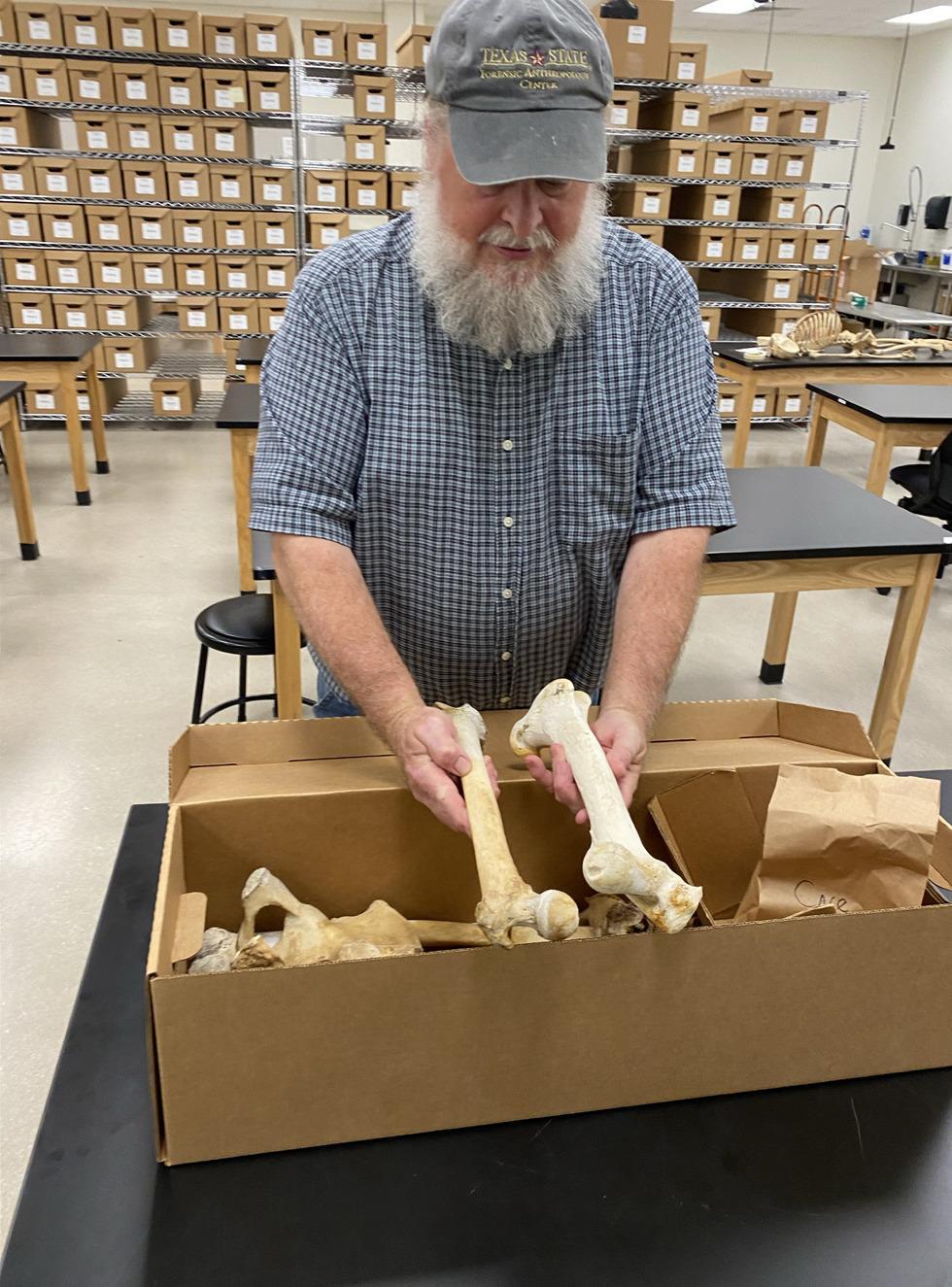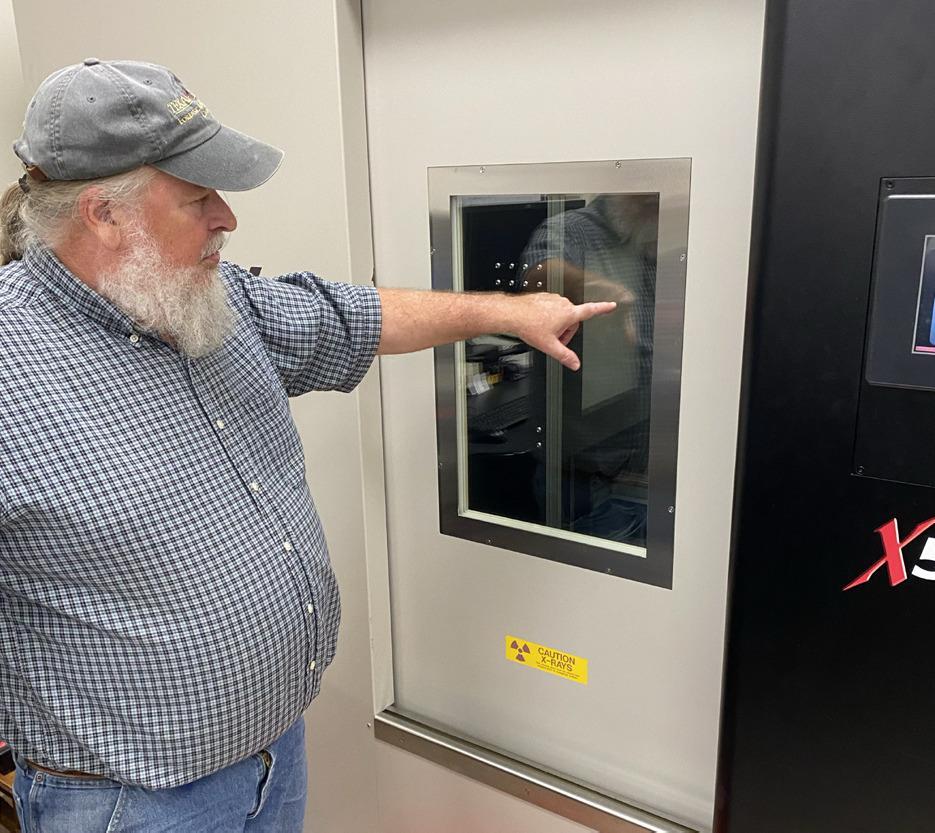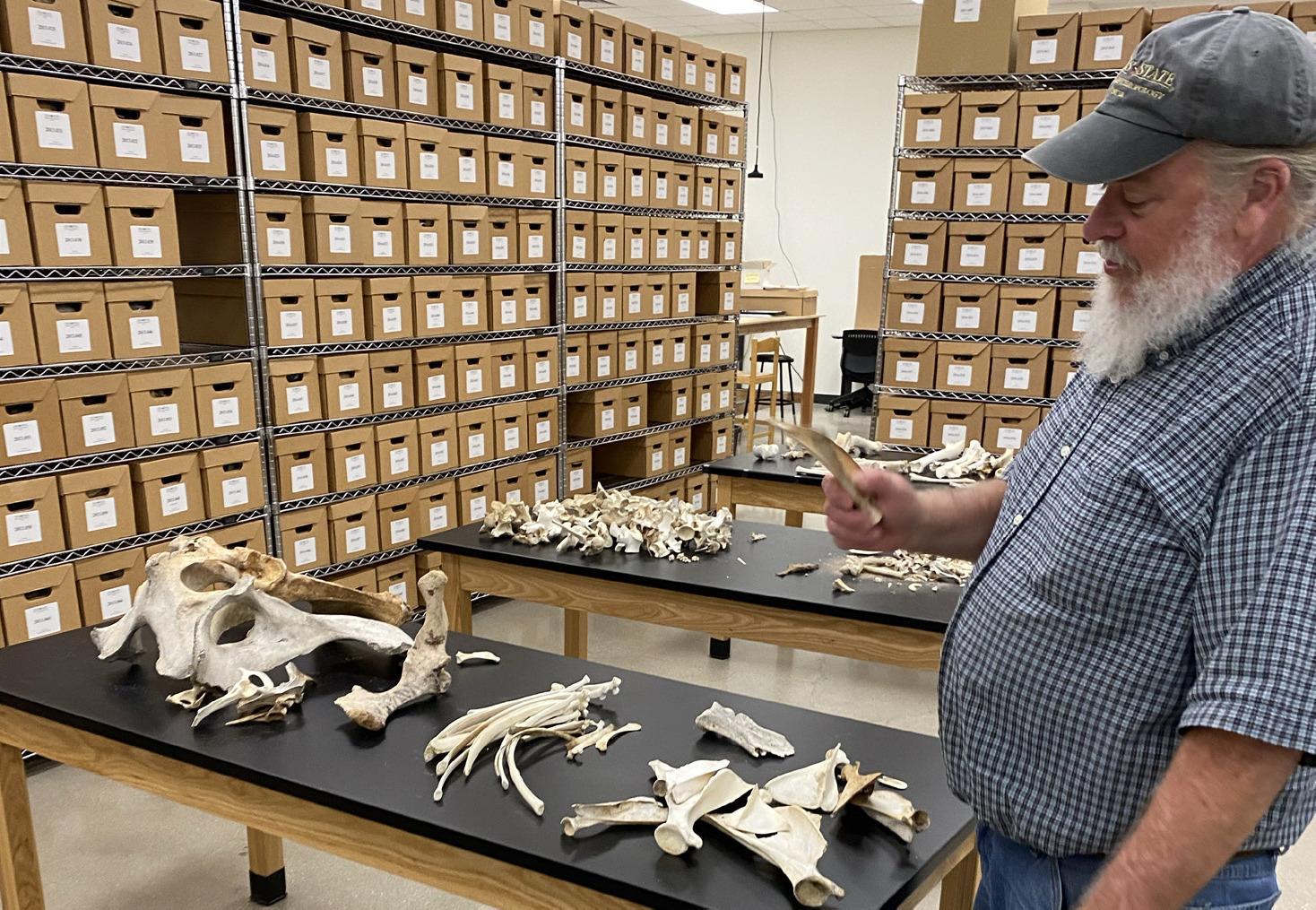
Director Danny Wescott sees the forensic study of bones and bodies as a way to assist law enforcement and advance research.
Daily Record photo by Shannon West

Below, Wescott explains use of CT scanner. Bottom, the decomposition of bodies affects vegetation.
Daily Record photos by Shannon West

Above, Forensic Anthropology Research Farm Director Danny Wescott examines bones submitted to Grady Early Lab from police worldwide.
Daily Record photo by Shannon West
Body Conscious
Forensic Anthropology Research Farm continues to provide necessary knowledge to wide group of organizations
This is the third in a multi-part series this week featuring our staff’s favorite stories from the year. We hope you enjoy this look back on 2023.
The Forensic Anthropology Research Farm at the Freeman Ranch, commonly known as the 'body farm,' is somewhat of a local mystery, and community members are dying to know what goes on there — pun fully intended. The research done on decomposing bodies and bones has assisted in solving crimes in many ways, but that is not all that goes on at the farm; law enforcement and firefighter training is also conducted at the FARF.
Texas State University’s Forensic Anthropology Center Director Danny Wescott, also a professor of anthropology at the university, said he received his undergraduate and master's degree at Wichita State University and his Ph.D. in anthropology at the University of Tennessee. Wescott said the FARF is 26 acres and is the largest location of its kind in the world in terms of acreage. He said all of the bodies are donated specifically to the farm either by request of the individual or their next of kin. He added that, at any given time, there are 70 to 80 decomposing remains on site. Depending on the research protocol, he said the bodies can be caged or left in the open; the uncaged bodies can give information on how far bones will be scattered by scavengers, so that police know how far to go when conducting a search.
Wescott described a decomposing body as a nutrient rich ecological zone with various organisms attempting to extract as many of the nutrients as possible before it dries up, which is what the decomposition process is, in a nutshell — a drying out process.
“Most decomposition facilities are associated with an anthropology department, but that is really just a historical artifact,” Wescott said. “Most of the research that’s done is not really anthropology.” He added that coming from an anthropology background, all of his knowledge of microbiomes — the community of microorganisms in an environment — or proteomics — the study of proteins and their cellular activities — was cultivated on-the-job.
Wescott said the research conducted at the FARF contributes to forensics in many ways because it’s multidisciplinary; It involves anthropology, entomology, microbiology, and soil science, to name a few, which he said is necessary to address something as complicated as decomposition.
He noted there are additional disciplines of study, such as agriculture, that contribute to the finding of clandestine remains, which is another form of research conducted at the FARF and Wescott’s primary focus.
“One of the ways that we find buried bodies is actually looking at near infra-red wave spectrum of plants,” Wescott said, adding that this technology is good at spotting plants with high chlorophyll content, which will be the case of plants growing above human remains; they will be healthier plants — due to the additional nutrients the decomposing body provides– and likely different than the surrounding area — due to the disruption of the soil when digging. This is evident at the FARF above buried remains.
Wescott said he also works with engineers because the same algorithm used in autonomous cars to spot humans can be used to spot human remains above the surface.
Another area of focus for Wescott’s research is the impacts of obesity on the movement of a buried body beneath the soil. He said if an individual is buried in a shallow grave with clay soil, the person will bloat and the soil will rise. He added that as the body dries up and the tissue deteriorates, there will be a cavity remaining — the more tissue the body has, the larger the cavity. He said the temperature of the air in that cavity will be different from the surrounding air and can be spotted via infra-red photography. He said that there is not a lot of research on the impacts of obesity on the process of decomposition or finding clandestined remains. With 40% of the U.S. population being obese, this knowledge will be necessary for solving future crimes.
At the FARF, Wescott said scientists study the impacts of fire on a body. There is also what he called a “fire village” in which there are several single unit buildings staged as hotel rooms, a couple of cars — one which will be left on and one off — and a dumpster each with a body inside.
“The pods we typically burn for 14 minutes,” Wescott said. “The typical response [time] for U.S. firefighters is eight minutes, and it typically takes them six minutes to put the fire out.”
He said that there will be anthropologists, medical death investigators and firefighters that come out to train.
“Part of it is to get them working together, so they know what the other person is doing and how they can help and what to leave alone.” Wescott said. “They have to figure out where the fire started, how it started [and] what happened to the body.”
Once the study is concluded on a particular body, Wescott said it will be used to train law enforcement and students on how to find and recover remains. He said the next step is to process the body into skeletal remains — weighing about 14% of the original body weight, which are sent to the Grady Early Forensic Anthropology Lab for further studies. The lab walls are lined with boxes, each containing the bones of one person. The lab has an industrial CT scanner that he said gets better resolution than the ones used at hospitals — 20 to 30 microns versus a millimeter, which has a thousand microns; the lower the micron or layer height, the higher the resolution. He said law enforcement will also send bones to the lab to determine whether they are that of a human or animal.
“It’s very different than somebody that donates their body to a medical school,” Wescott said. “Where they’re dissected one semester then cremated.”
To donate your body to the FARF and the critical research conducted there go to txst.edu/anthropology/ facts/donations/body.











